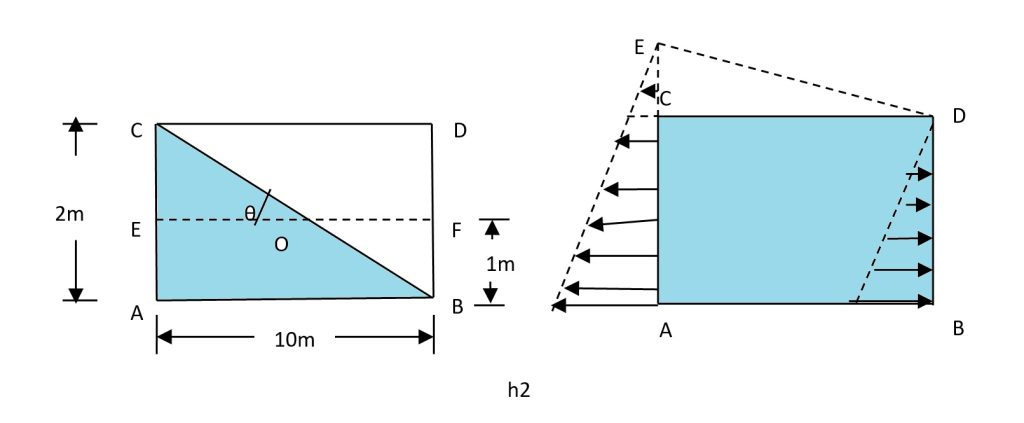Pipe Reducer Force Calculation
Problem Statement
A 60cm pipe is connected to a 30cm pipe by a standard reducer fitting. For the same flow of 0.9 m³/s of water and a pressure of 200kPa, what force is exerted by the water on the reducer, neglecting any lost head?

Given Data
Solution Approach
To find the force exerted by water on the reducer, we need to:
- Calculate the cross-sectional areas of both pipes
- Determine the velocities in each section
- Apply Bernoulli’s equation to find the pressure at section 2
- Use the momentum equation to calculate the force on the reducer
Preliminary Calculations
Step 1: Calculate the cross-sectional areas:
Step 2: Calculate the velocities:
Applying Bernoulli’s Equation
Step 1: Apply Bernoulli’s equation between sections 1 and 2 (assuming Z₁ = Z₂):
Step 2: Substitute the values:
Force Calculation Using Momentum Equation
Step 1: Apply the momentum equation:
Step 2: Rearrange to solve for Fx:
Step 3: Substitute the values:
Summary
-
We determined the velocities in both pipe sections:
- V₁ = 3.18 m/s (60 cm pipe)
- V₂ = 12.73 m/s (30 cm pipe)
-
Using Bernoulli’s equation, we calculated the pressure at section 2:
- P₁ = 200,000 N/m² (given)
- P₂ = 124,030 N/m² (calculated)
-
The momentum equation was applied to find the force:
- Pressure force component: 47,776 N
- Momentum change component: -8,595 N
- Net force: 39,178 N to the right
- The forces in the Y-direction balance each other, so Fy = 0.
This problem demonstrates the application of Bernoulli’s principle and the momentum equation in fluid mechanics to determine forces in pipe systems with changing cross-sectional areas. The reducer experiences a significant force due to both the pressure difference and the momentum change of the fluid.






